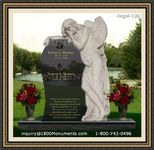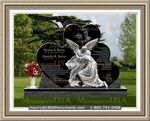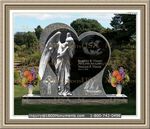|
What You Should Learn When Creating A Headstone Epitaph
There are a great number of details that must be attended to when setting up funeral arrangements. Unless someone plans ahead, these responsibilities are usually left to a trusted individual, or to multiple members of the deceased's family. Composing a fitting epitaph is just one of the many tasks that will need to be handled.
This is a brief statement or phrase, sometimes a poem or prose, that is inscribed on an individual's headstone or commemorative plaque. It says something about the person it represents. There are several different forms this tribute can take, mostly dependent on the deceased's personality, life choices and who is writing it.
Nearly every grave marker starts out with the same basic identifying information. They state with the deceased's name and the date of their birth followed by when they passed away. Some people choose to stop there, but many opt to include additional statements, sentiments or facts that either describe the individual, or speak to their life or personality.
For many, traditional sentiments such as wishes for a peaceful slumber or an explanation of how loved the deceased was is all they add. The statement may be an attestation about their family relations, community work, military service or other accomplishments. It is also quite the popular choice to use a meaningful piece of scripture for this purpose.
Some individuals choose to write their own inscription prior to their death. This allows them to ensure that they get exactly what they want on their stone and gives them the freedom to be creative. Those with a keen sense of humor often take this opportunity to make a witty final remark or write an entertaining remark that will bring smiles to visitors for years to come.
Those who write their own might also like to use this as a platform to impart a last bit of wise advice to others. Often this involves encouraging people to be happy and live life well. One can be as creative as they wish with their final statement.
|
|



























